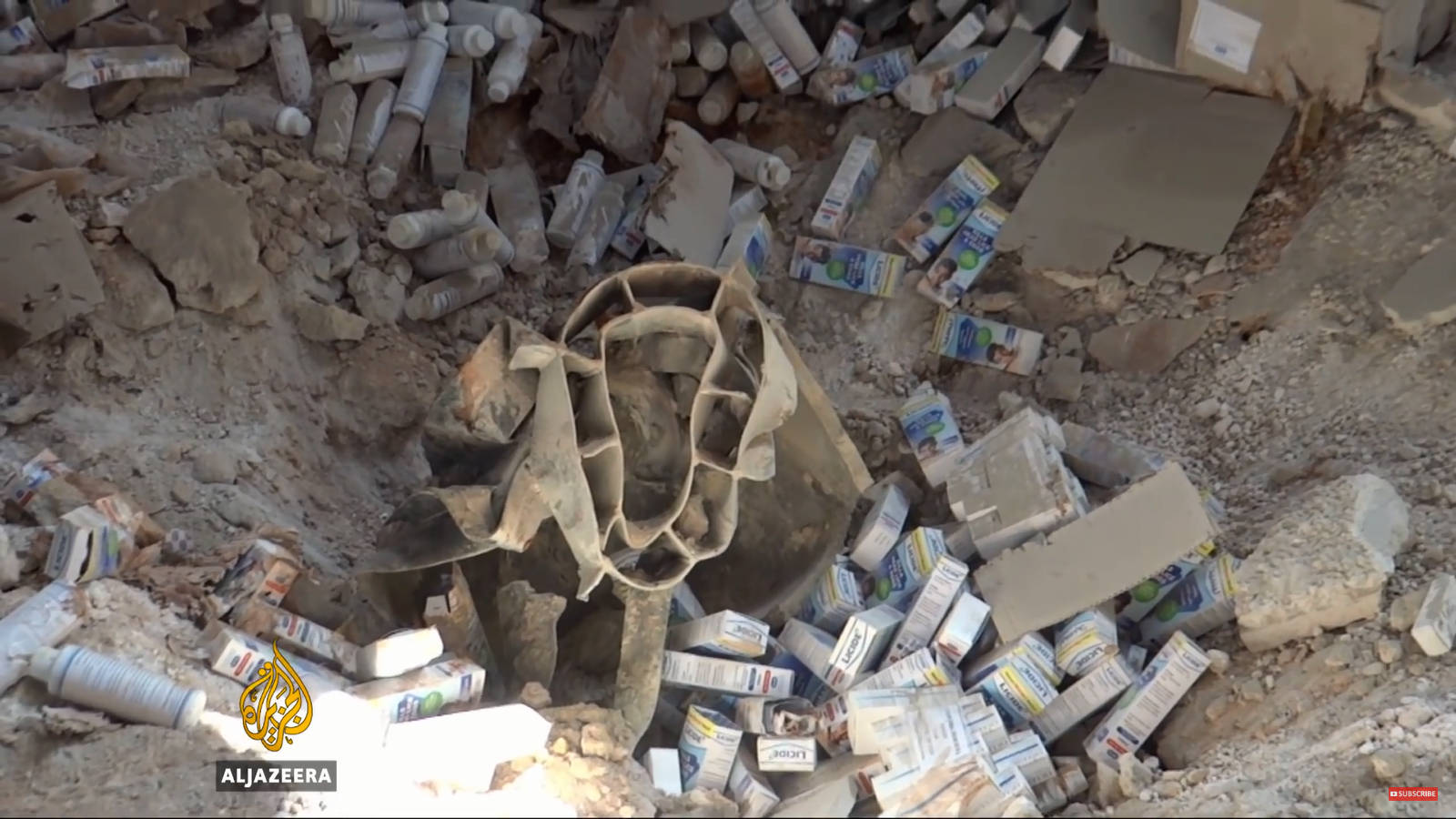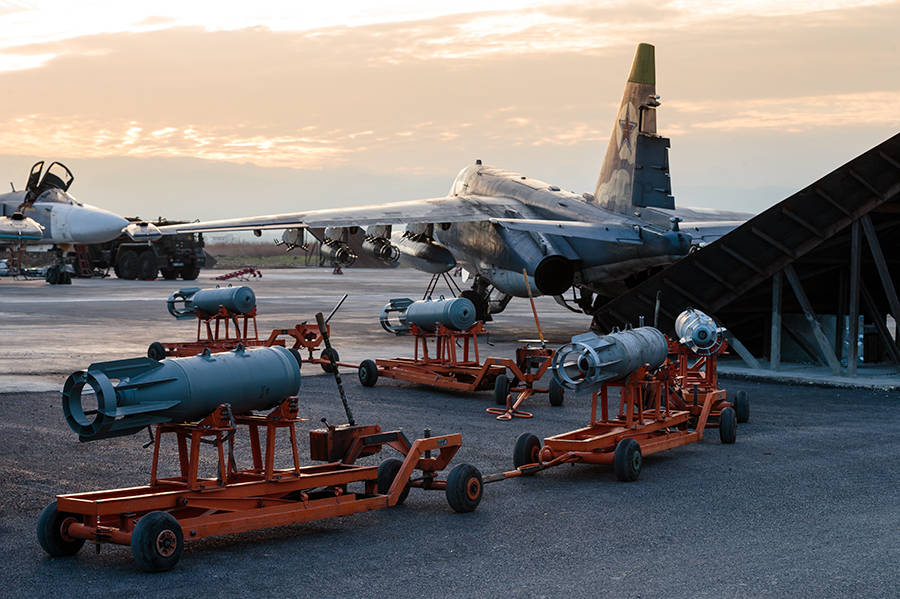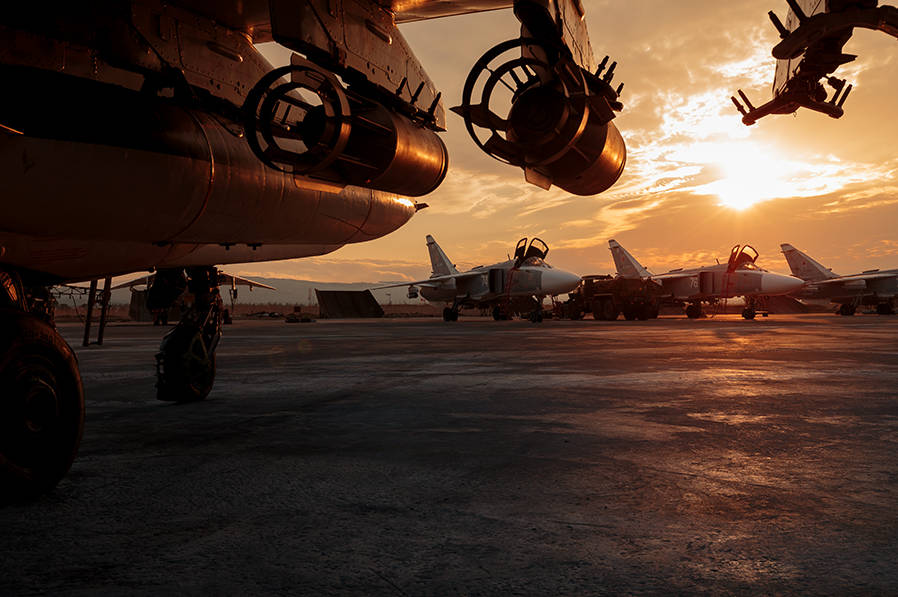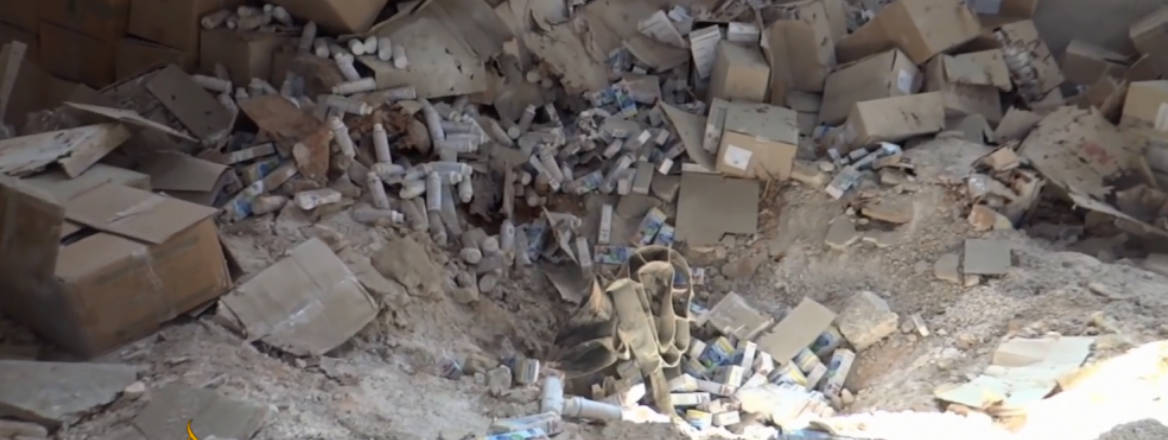Footage Indicates Russian Bomb Dropped on Aleppo UN Aid Convoy
Last Monday a UN aid convoy was targeted and destroyed by what appears to be Russian-made munitions. It is therefore likely that either the Russian Air Force or the Syrian Air Force carried out the attack.
This is a picture from inside one of the warehouses which the Aleppo UN aid convoy was unloading into when it was destroyed on Monday 19 September. The strike killed 20 aid workers and contributed to the collapse of the fragile ceasefire agreement brokered by Russia and the US, which had already been shaken a few days earlier by air strikes on Syrian government forces by the US-led coalition which apparently mistook them for Daesh forces.
Syrian rebel forces have blamed a government helicopter dropping barrel bombs for the convoy’s destruction. Meanwhile, the US has blamed the Russian Air Force, stating that two Sukhoi Su-24 Fencer jet bombers were over the convoy at the precise time of the attack.
The bomb fragment gives clues as to the perpetrator of the attack, as does the fact that the boxes of aid around it are peppered with shrapnel but not noticeably burnt (see close-up below). There is also a small, but quite well-defined, crater which has been left in the earth by the explosion.

The characteristic double-circular cross braced tail fins which can be seen twisted in the hole marks this out as either an OFAB 100-120 high explosive fragmentation bomb or its larger cousin the OFAB 250-270. Given the spacing of the rings, the larger OFAB 250-270 is the most likely culprit. This bomb is a mainstay of Russia’s air campaign in Syria (see photos below of OFAB 250-270s and Russian combat aircraft at Latakia, Syria). They were also a hallmark of the Syrian regime’s own bombing before a shortage of conventional munitions stocks led to increasing reliance on cruder improvised barrel bombs.


The OFAB 250-270 is unguided and is regularly carried by all the Russian and Syrian jet fighter bombers operating over Syria. Furthermore, it contains a relatively small explosive payload compared with larger 500–2,000lb munitions regularly used by the international coalition, which would account for the lack of significant structural demolition of the wall behind – shrapnel piercing being the only obvious damage.
The fact that an OFAB 250-270 was used in the raid on the Aleppo aid convoy proves without doubt that either a Syrian Air Force or Russian Air Force airstrike was responsible for its destruction – not artillery, landmines, or the aid itself spontaneously combusting (as the Russian Foreign Minister Sergei Lavrov suggested to widespread ridicule at the UN on Wednesday morning).
According to the US, which has extensive airborne surveillance coverage over Syria, there were two Russian Air Force Su-24s over the convoy at the time of the strike. And the fact that the OFAB 250-270 is routinely used by these aircraft over Syria strongly suggests that Washington’s account is accurate and that the aid convoy was destroyed by the Russian Air Force.
Even if a Syrian Air Force Su-24 dropped the munitions involved, the fact that the convoy was tracked by a Russian UAV in the hours leading up to the attack shows that, at the very least, Russia provided the targeting information.
Whether or not a Syrian Air Force helicopter also dropped barrel bombs on the convoy as part of the multiple strikes, as aid workers reported, is impossible to prove from this image alone, but the involvement of the Russian Air Force looks highly likely.
The repeated striking of this aid convoy during what was supposed to be a US–Russian backed ceasefire, in darkness, is very unlikely to have been a coincidence – especially if both the Russian and Syrian air forces took part.
WRITTEN BY
Justin Bronk
Senior Research Fellow, Airpower & Technology
Military Sciences


